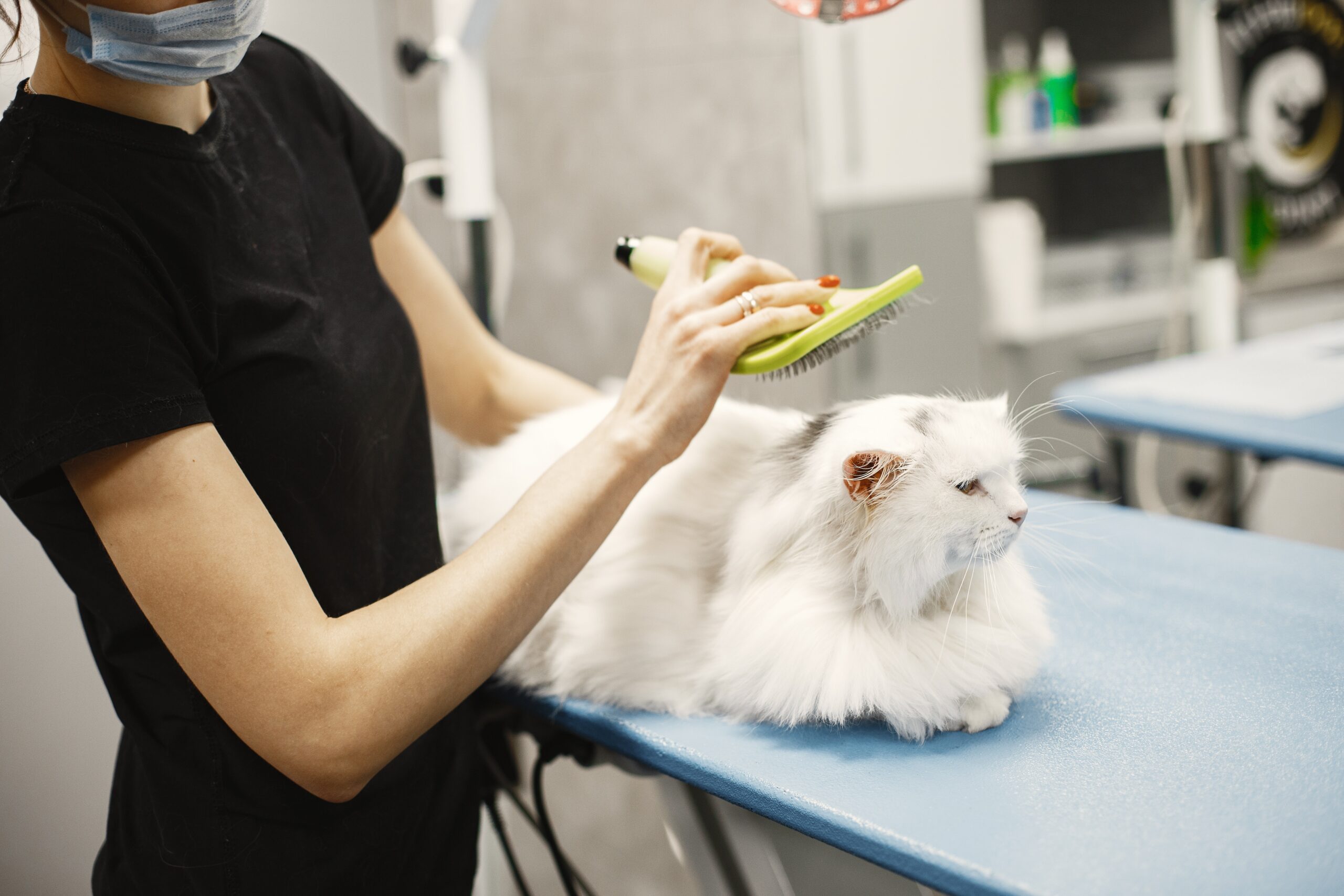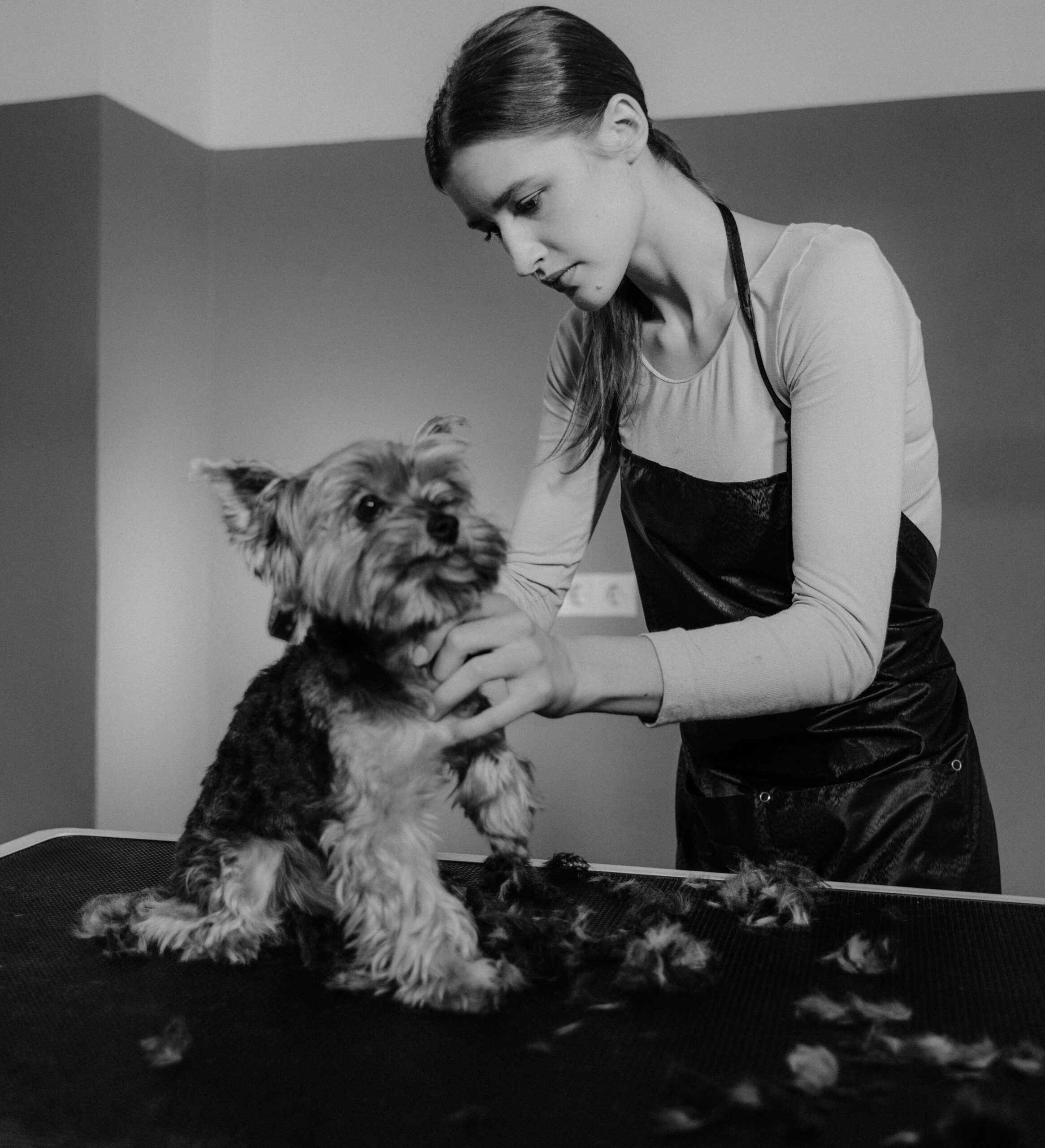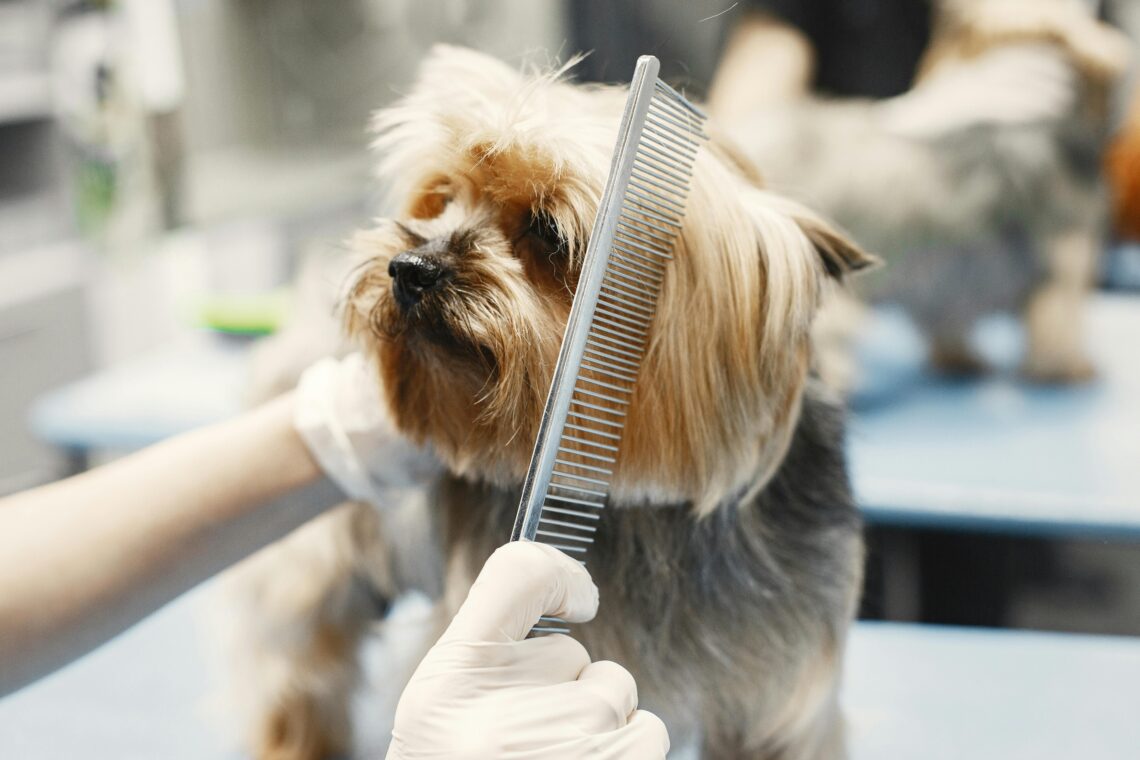
Dog grooming at home: Useful Tips for dog grooming
Why your dog need grooming?
Dogs of all breeds benefit from routine grooming because it keeps their coats sleek and free of tangles and allows you to check for skin problems and parasite infestations, which enhances their general hygiene. Additionally, giving your pet a grooming may be a one-on-one bonding opportunity.
Even low-maintenance dogs with short coats require routine nail cutting, washing, and brushing. Longer coat dogs could also require hair cutting and clipping. These seven suggestions can assist you in creating an at-home grooming regimen with your dog, even if you may want to make routine visits with a professional groomer, particularly when it comes to cutting and trimming your dog’s hair.
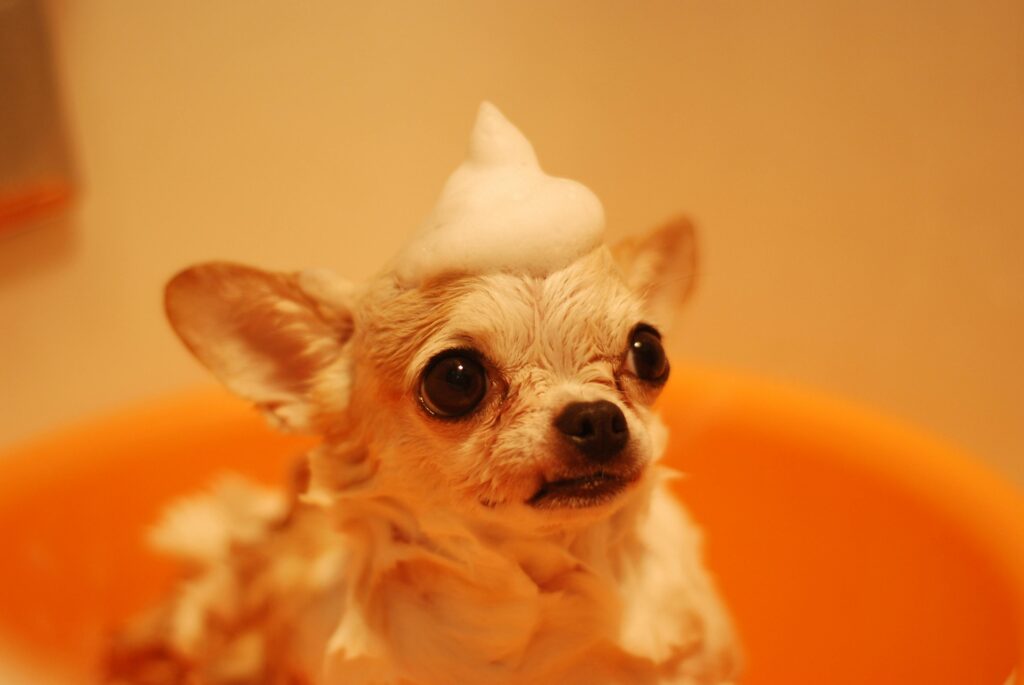
Equipment required for grooming:
- Blunt ended (round tip) shears and/or a small clipper with guide combs
- Cotton balls
- Hair dryer
- Microfiber towel
- Nail clippers (dog specific)
- Rubber-bristled brush, wire slicker, steel comb and/or de-shedding tool
- Shampoo (dog specific) and conditioner (dog specific)
- Soft reusable cloth squares
- Styptic pencil (for accidental bleeding)
- Toothbrush and toothpaste (dog specific)
Hair brushing of your dog:
Your dog’s coat needs frequent brushing to stay glossy and sleek, regardless of breed. The length and texture of your dog’s coat determine how much brushing is necessary each week. While shorthaired types like greyhounds or labradors might only require a thorough brushing every other week, longhaired species like golden retrievers and collies will require more regular brushing—at least once a week.
Badly matted hair can hurt dogs with lengthy hair. Dogs who are irritated will lick or bite themselves, which could lead to skin diseases. In addition to hiding beneath a matted coat, foreign objects like grass seeds can burrow into the skin and produce an abscess. Brushing your longhaired dog on a regular basis keeps matting from developing into an issue.
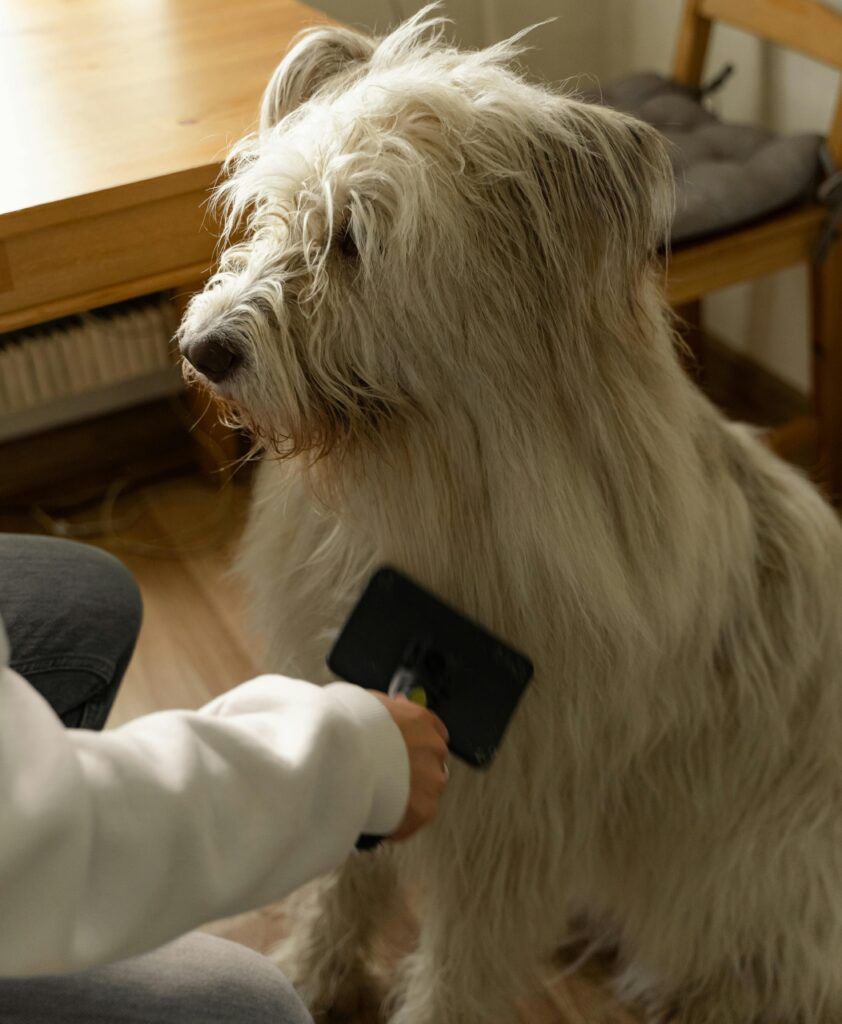
Brushing is beneficial for shorthaired dogs as well. By brushing your dog’s coat, you may prolong the time between washes by removing loose hair, grime, and dander.
Trimming of extra hair growth:
When getting their dog’s hair trimmed, the majority of dog owners choose to take their pets to a groomer. Nevertheless, between professional grooming appointments, you can gently cut excessive hair around your dog’s eyes or feet. Overgrown hair can obstruct your dog’s eyesight and cause irritation by rubbing against its eyes; this can be avoided by trimming the hair around its eyes.
Never leave your dog alone until they are relaxed and, ideally, laying down. When scissor blades are close to the skin, go cautiously and gently and exercise extreme caution. When you’re done, don’t forget to give your dog a treat to acknowledge his composure.
Ear infections can be avoided and airflow can be enhanced by trimming the hair inside the ears. But, your veterinarian’s office or a skilled groomer would be the ideal places to accomplish this.

Recall that using scissors or clippers on your pet can easily result in unintended cuts. Always use caution while clipping your dog’s hair, and consider using a professional grooming service if you’re anxious or would just rather not do it yourself.
Trim your dog’s nails safely:
When you hear your dog’s nails clicking on your hard floors, trim them. By doing this, you may keep your dog from being uncomfortable due to long nails. But first, there are a few safety precautions you should take before cutting your dog’s nails for the first time.
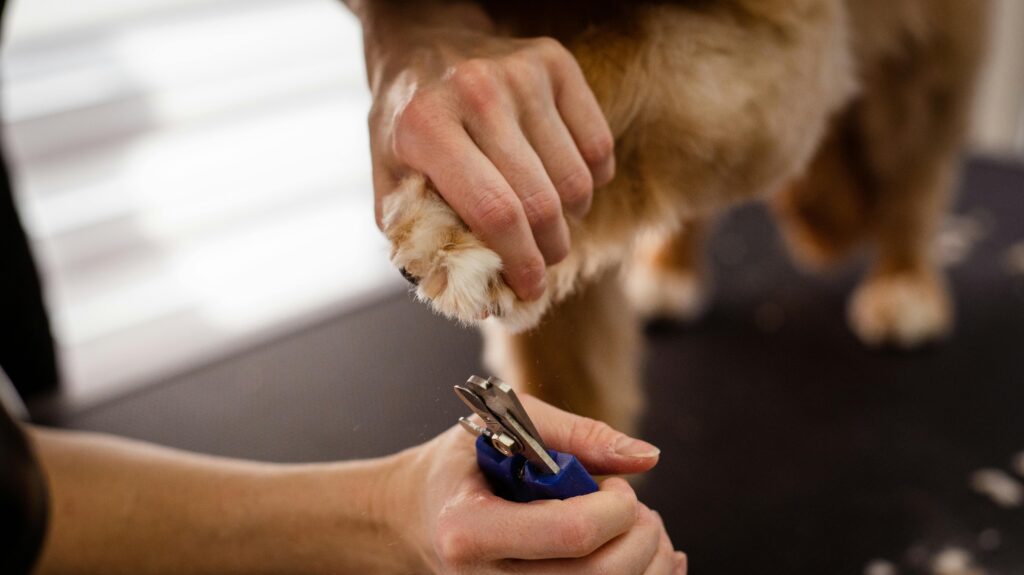
Tooth brushing of your dog:
Like with people, try to brush your dog’s teeth twice a day to avoid gum disease, which can harm the heart, liver, and kidneys and necessitate expensive dental procedures or oral surgery. In a few of days, plaque turns into tartar, which can only be removed by a veterinarian during a comprehensive teeth cleaning. Because their teeth are typically more packed than those of larger dogs, little dogs are particularly vulnerable to dental problems.
Make use of toothpaste designed especially for dogs and a gentle toothbrush. Human toothpaste may be hazardous to dogs, so never use it on them.
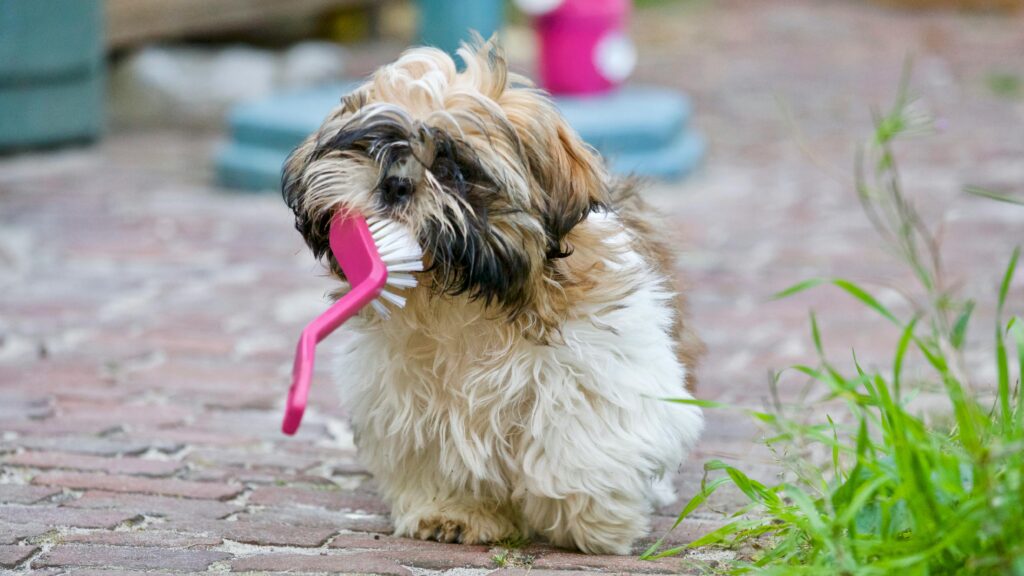
Dental treats can aid in the reduction of plaque, but only if your dog gives the item ample chewing time before ingesting it.
Ear cleaning of your dog:
It’s important to regularly check your dog’s ears for any signs of infection. Make sure to examine your dog’s ears closely while brushing it. If you notice any unusual behavior or changes in appearance like moisture, inflammation, unusual odor, scratching, shaking of the head, or unusual discharge, it’s best to take your dog to the veterinarian for a check-up. Ear infections can be unpleasant and painful for your furry friend, so it’s important to catch them early. If your dog shows discomfort when you look at its ears, it’s best to seek professional help as soon as possible.
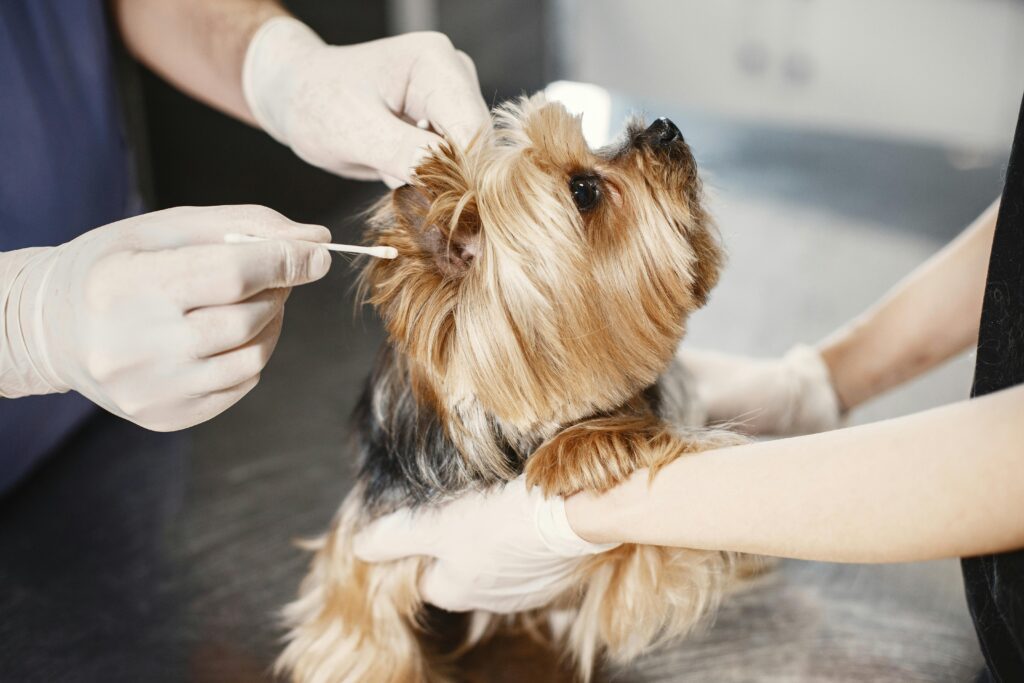
Anal gland secretions and its cleaning:
You risk hurting your dog or maybe impairing the glands. Every time your dog poops, their anal glands spontaneously express themselves and create a fragrance signature for other canines. To assist your dog’s glands express themselves, add a spoonful of canned pumpkin or Metamucil to their diet. If they start scooting their bottom over the carpet, biting at their glands, or releasing an unpleasant stench, consult your veterinarian.
Precautions for grooming:
It’s important to make grooming a pleasant experience for your dog. Many dogs, especially puppies, may need encouragement and positive reinforcement when starting a grooming routine. Here are some tips to help make your at-home grooming sessions easier:
– While brushing or bathing your dog, let them lick some Vegemite spread on a clean surface.
– Be gentle with your dog and offer lots of love and affection to help them look forward to their next grooming session.
– Place a non-slip mat in the bathtub to prevent your dog from slipping around during bath time.



